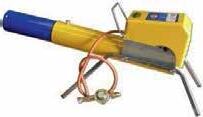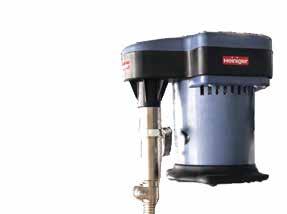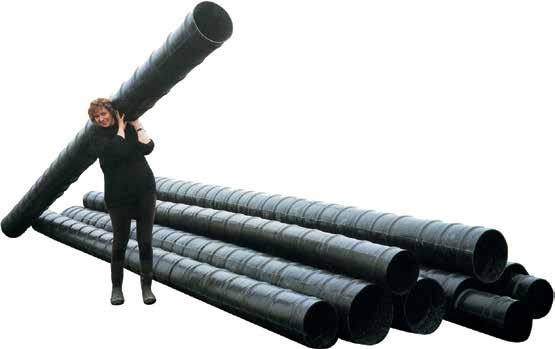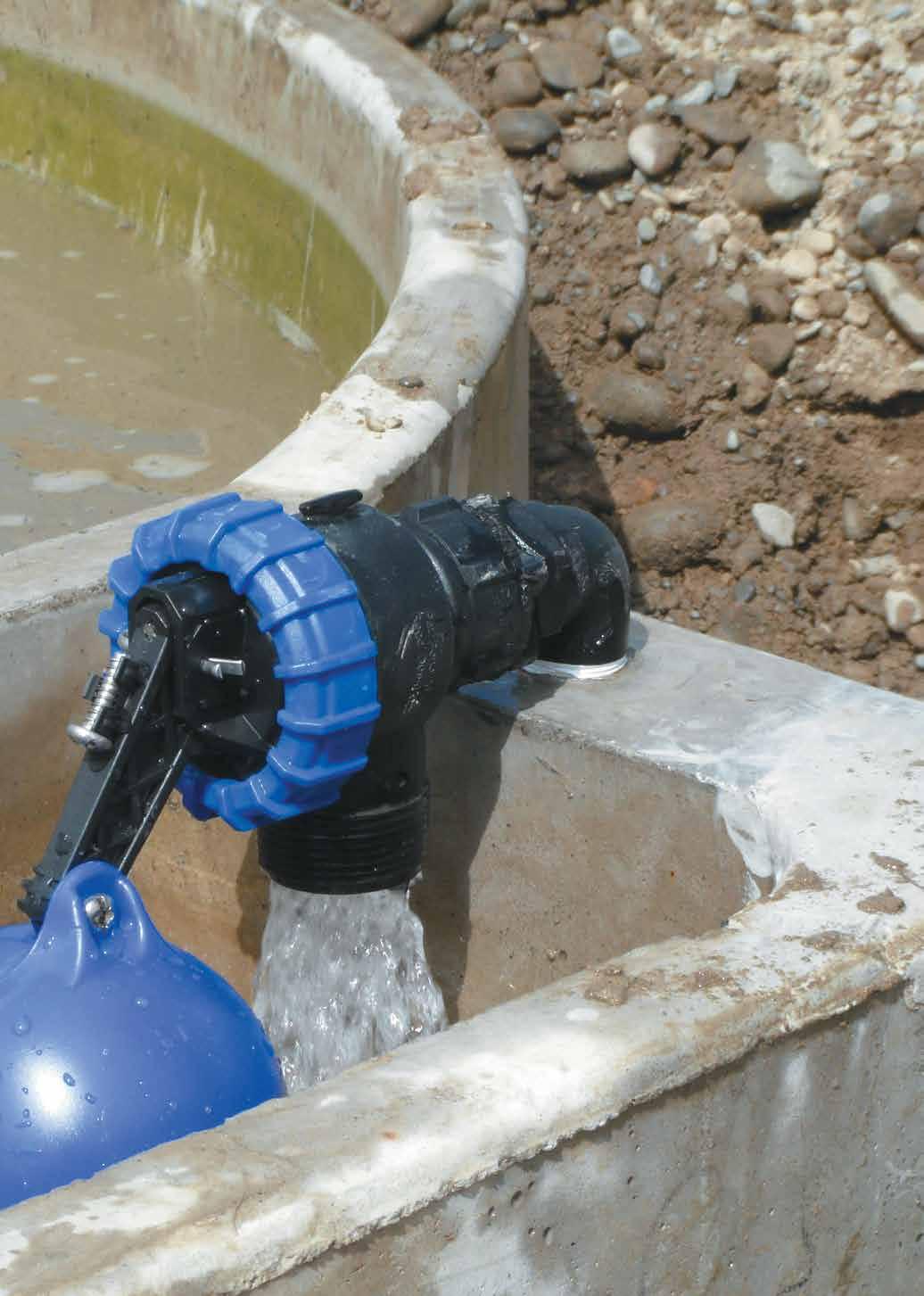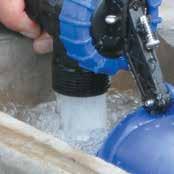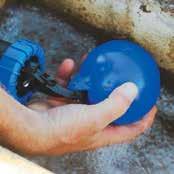
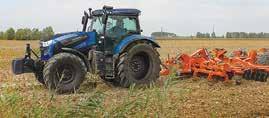





the Red Sea area could continue for many months or even years,” he told Rural News
THE SHIPPING crisis caused by Houthi rebel attacks in the Red Sea and problems with a lack of water in the Panama Canal appear to be deepening by the day.
Many of the ships heading to Europe with NZ produce are being forced to take the longer route around the Cape of Good Hope, adding an extra two weeks to the journey to some of NZ’s major markets.
One of the companies affected is Silver Fern Farms and its GM sales, Peter Robinson, says they have been told that there appears to be no easy fix to the present situation.
“We’ve been told that disruption in
Robinson says shipping companies are passing on the cost of re-routing, resulting in additional supply-chain costs for product on the water. He says the Middle East is also
Agriculture Minister Todd McClay and the chair of ApicultureNZ Nathan Guy were the main speakers in an event to launch a new strategy for the honey industry. The aim of the strategy is to propel the industry to being a significant exporter and to double the value of honey exports by 2030, with a focus on manuka honey. In 2022, honey exports were worth about $4.5million, of which manuka exports accounted for just over $4 million. The industry has had a roller coaster ride in recent years with the value of exports fluctuating and other challenges within the sector itself.
affected, with the main port into Saudi Arabia in Jeddah virtually inaccessible. Instead ships are unloading at Dammam Port in the Persian Gulf and carting containers inland an additional 1600km to their destinations, Robinson says.
“Empty containers must then
be returned to Dammam Port adding further costs to importers.” Robinson says Silver Fern Farms (SFF) is closely monitoring timeliness of refrigerated containers due to longer journeys on land and sea. He says while it has successfully managed container
availability so far, they are advised disruption in this region could continue. Robinson adds that SFF will continue to work closely with its global freight partner Kotahi, to ensure the product they work so hard to produce can make it through to customers in the UK, Europe and Middle East.


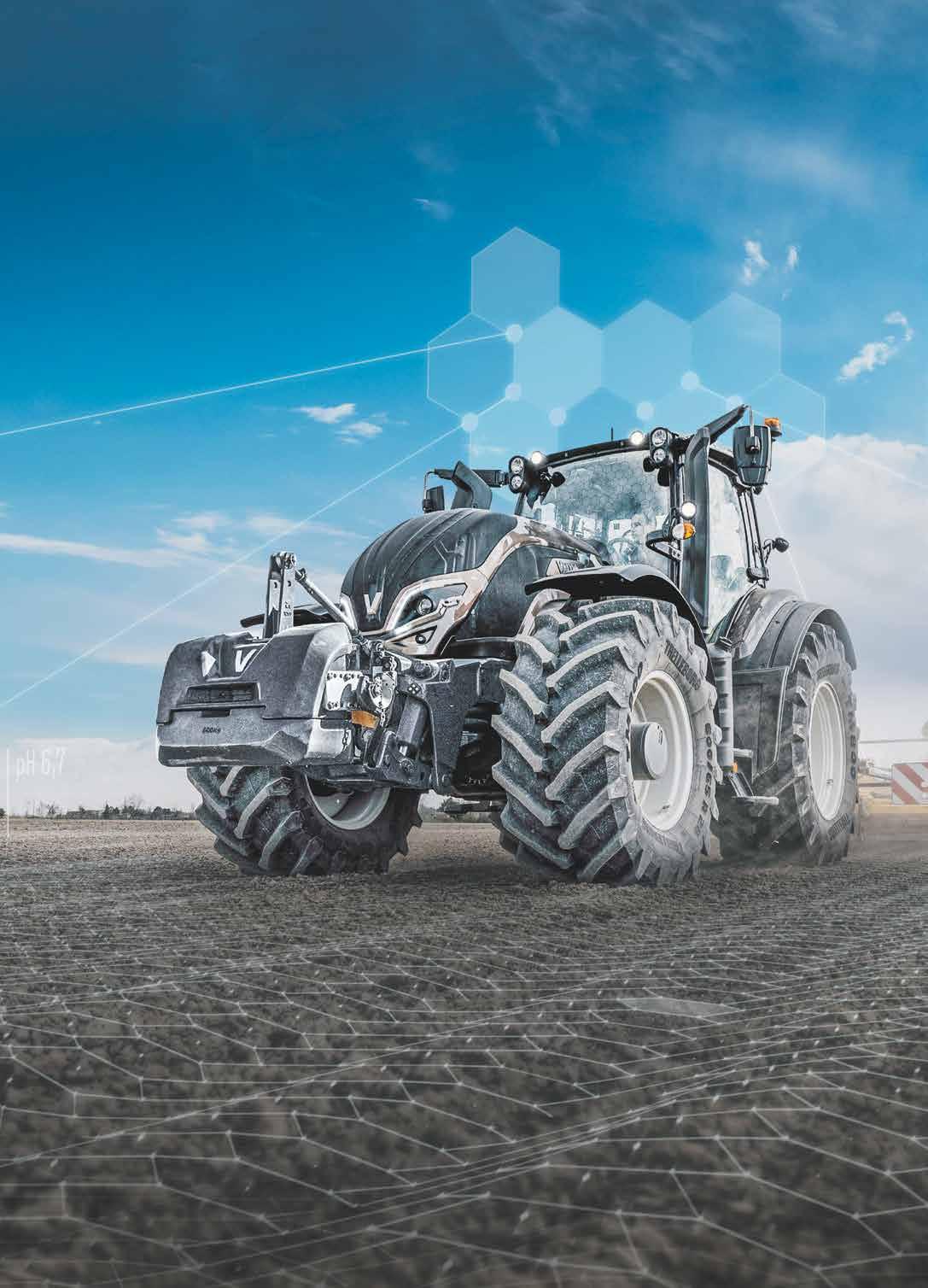
RATHER THAN banning live animal exports, New Zealand should raise the standards required of the industry.
That’s the message from Live Animal Export New Zealand (LENZ) in response to a call by animal welfare campaigners to maintain the ban on livestock exports imposed by the previous Government.
Save Animals from Exploitation (SAFE) launched a nationwide campaign last week, urging the new Government to preserve the ban. The campaign is calling on New Zealanders to add their names to a parliamentary petition. Headed by former chair of the National Animal Welfare Advisory Committee (NAWAC), Dr John Hellstrom. SAFE claims the prohibition on live export by sea, enforced in April 2023, sets a global standard for animal welfare.
But the coalition Government intends to remove the ban and legislation around higher standards of animal welfare for exporters could be introduced in Parliament later this year.
A LENZ spokesperson told Rural

News that it supports the Government’s requirement that livestock exports can be reinstated while ensuring the highest standards of animal welfare.
“The wellbeing of animals is a primary concern for operators across the livestock export supply chain.
“Research shows that this commitment to animal welfare aligns with the view of New Zealanders.”
The research commissioned by LENZ in December 2022 shows that there is strong confidence among New
Zealanders that regulation can hold industry accountable and ensure it does the right thing.
The report says the ban results in a net cost to farmers of around $49,000 to $116,000 a year per farm, costs incurred by around 1060 to 2900 farms.
Overall, the ban is likely to impose a net monetised cost to national wellbeing of around $475m annually in the short run and around $320m on an ongoing basis.
Costs to animal welfare of a ban
include increased bobby calves slaughtered by around 150,000 calves per annum.
But SAFE chief executive Debra Ashton says overturning the ban on live export would not only jeopardise the welfare of animals, but also undermine the progress made for the country.
“It is essential for the Government to prioritise the best interests of New Zealand’s animals and listen to the voices of concerned citizens who advocate for their rights and welfare.”
RECENT RAINS across much of the country have had little impact on some of the worst hit drought regions of the country – namely the top of the South Island.
Rural Support Trust chair for this region Richard Kempthorne says the drought in Marlborough remains severe and is among the worst farmers there have experienced. He says up until the middle of last week about 20mm of rain had fallen, which was nice but this would dry out pretty quickly.
Kempthorne says the weather

•
•


forecasts to the end of April suggest the dry spell will continue.
“The farmers who are really dry need about 50mm of gentle rain that just soak in. Until that happens the farmers who have been in those drought stricken areas will still be badly impacted,” he adds.
In anticipation of a drought, Kempthorne says many farmers did de-stock a bit because they knew from the forecast that we were in an El Nino weather pattern. He says it was generally a good summer for growing supplement feed, but that is grown for feeding out in winter.
“What they have been doing is feeding out the winter supplemen-
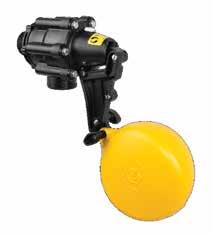
tary feed earlier.”
Kempthorne says the problem is that farmers may end up having to buy in extra feed for winter. “What they are really looking at now is trying to manage their farm situation, so when autumn rains arrive and the grass starts to grow, they have got enough pasture to manage their way through winter with the help of what supplement they may have left over.”
While a drought has not been declared in the region, the government recently made a grant of $20,000 to the Rural Support Trust to plan for events and ensure that early support is available for farmers, growers and rural communities.
Rural Communities Minister Mark Patterson says this additional support is needed as forecasters predict the dry weather will linger into autumn.
The other dry region is the Wairarapa, parts of which benefited from the recent rains. Wairarapa Federated Farmers president David Hayes says the latest rain will be really good and get flow levels up in rivers.
He says a drought is normal in the region at this time of year but some areas in the east have been badly hit. He adds that in other parts, the situation is a case of wait and see what happens in the next few weeks.



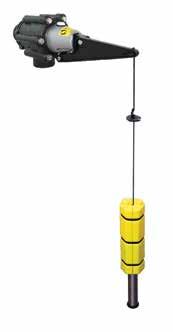
FARMERS ROUND the country are calling on the Government to rein in councils that are trying to push through district plans and other planning processes despite reforms coming to the Resource Management Act (RMA).
There are concerns that some councils – and particularly those with activist staff members –are trying to implement district plans under the previous Labour Government’s rules before the new coalition Government can change the RMA.
One such example is the Waitaki District Council (WDC), which is trying to push through its Waitaki District Draft District Plan to notified stage.
North Otago farmers Jane Smith and Simon Williamson have written to RMA Reform Minister Chris Bishop and Local Government Minister Simeon Brown, on behalf of many farmers in the region, urging them to act with urgency to send written correspondence to all district councils –including Waitaki District Council – clarifying the need to, “cease notification of their proposed District Plan/s immediately and cease all planning processes related to all RMA Section 6 matters until further notice”.
In their letter to the ministers, Smith and Williamson state that the WDC’s new draft district plan identifies 44,000 hectares to be classified as Outstanding Natural Landscape, Outstanding

Natural Feature, Significant Natural Feature, Rural Scenic Landscape and 300 Significant Natural Areas.
In addition, some 35,000 hectares is earmarked for the new Sites and Areas of Significance to Māori (SASMs).
“These specified areas previously totalled approximately 1980 hectares,” they explain. “This is a 2200% increase.”
Smith and Williamson claim this will affect 1638 private property owners involving 5979 parcels in the Waitaki District. “Many of whom are unaware of these classifications on their freehold land.”
They add that the scale of these new areas
MEANWHILE, CONCERNS have also been raised about the actions of Otago Regional Council (ORC).
The ORC has been warned against ploughing ahead with a controversial water plan.
Councillors and staff recently met Resource Management Act Reform Minister Chris Bishop, Environment Minister Penny Simmonds and Agriculture Minister Todd McClay to discuss how the new Government’s plan to update national freshwater management policies would affect the council’s under-development land and water plan.
The council’s plan remains on track to be notified at the end of June.
However, when Bishop informed the ORC in December that their June deadline had changed, but the council issued a statement the following day saying, no, it had not.

Bishop said at the meeting the three ministers reiterated the government position regarding “replacing and rebalancing” the national policy statement for freshwater management (NPS-FM) and the government position that all regional councils’ freshwater plans had a new deadline of December 31, 2027.
“That applies to Otago Regional Council as it does to other regional councils.
“This means that they can focus on the process of helping develop the replacement NPS-FM rather than implementing the current one that will soon no longer exist.”
Simmonds says a “very clear message” was given that there would be changes and it would be unwise to spend ratepayers’ money on a plan that may change substantially within the next 18 months.
appears to have escalated
even after the Natural and Built Environment and Spatial Planning Acts were repealed on December 23, 2023.
“We note that no Section 32 RMA analysis has been carried out by council on the economic and social impacts of this plan change,” they add.
“Around 85% of Waitaki District landowners, that we have surveyed in the past three weeks, have had either no further communication after challenging classifications on their land or had even greater restrictive classifications imposed after questioning the process.”
Meanwhile, local MP Miles Anderson has also expressed concerns about
the process.
The Waitaki MP and deputy chair of the Primary Production Select Committee says the proposed district plan will include significant overlays that will affect an enormous amount of freehold land.
“Landowners who are significantly affected by the proposed district plan’s overlays – which include Significant Natural Areas, Outstanding Natural Features, Sites and Areas Significant to Maori and Rural Scenic Areas – feel it was neither a fair nor equitable process. They also believe that the criteria for these designations were subjective in nature.”
Anderson says the proposed plan is currently in draft form, however once it is notified, some rules will have immediate legal effect.
“These proposed overlays are an erosion of private property rights and are likely to drastically de-value productive land, which has been farmed and modified over the past 180 years,” he explains. “The downstream effect on landowners is likely to be reduced lending ability and potential pressure from banks to repay debt due to the subsequent loss of equity.”
Anderson says he has met with the WDC on behalf of his constituents and shared their concerns and says these discussions were productive.
“I have asked that council consider these concerns when making their decision on notifying the proposed plan.”

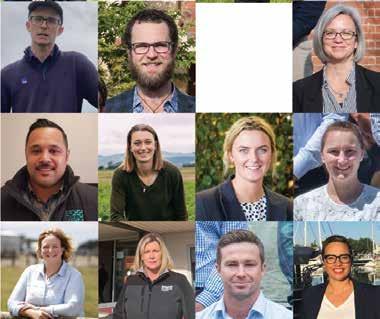
WHILE CONFIDENT
that the apiculture sector can meet its target of doubling honey exports by 2030, chair of ApicultureNZ, Nathan Guy, says it will be challenging.
He says it will need the full support of the industry and some help from government. Guy says the just launched strategy has an aspirational aspect to it, but if they can get the right policy settings from government, including improved quality trade access, it will be achievable.
The strategy document notes that NZ is recognised worldwide as a global leader in the production of high quality honey and the only credible source of manuka honey. This is despite the fact that the Australians claim they are.
The strategy has three pillars: First, sustainability – meaning a call for the industry to commit to working as one, the aim being to grow, while still recognising issues such as climate change, the need for more research, alignment on risk management and enhancing the environment. The other two pillars relate to maintaining high quality standards and focusing on consumer needs.
The strategy acknowledges the somewhat rocky road the industry has gone down in recent years with accelerated growth since 2008, which saw exports rise to $350 million in 2019.
But while production rose, markets dried up for non-manuka honey and to this day there are still significant quantities of unsold honey stored in sheds around the country.
Despite the challenges, ApicultureNZ is confident that there is a positive path forward, saying the honey sector is extremely well placed to take advantage of an anticipated growth in global demand – especially for manuka
PITA TIPENE, chair of the Manuka Charitable Trust, whose role it is to preserve the mana of manuka, says there has been a major resurgence and recognition of the value of manuka.
He notes that the Ngati Hine Forestry Trust has planted 400 hectares of manuka over the last few years.
“Put it this way, our Ngāti Hine Forestry Trust has a strategy to move from pinus radiata back to native cover with manuka as the nursery crop. We know that manuka has a commercial return in terms of its honey, oil and other derivatives related to medicine,” he says.
Tipene says a major challenge is the Australians who claim that manuka is native to their country, which is not true. “They will do anything those Australians,” he adds.
Meanwhile, Agriculture Minister Todd McClay says in Asia manuka honey is known and cherished because of its well-known health attributes.
He says it is a product that New Zealanders should be very proud of and promote. McClay says manuka honey is the result of much work by people who have researched and developed the product to the standard it is today.
McClay believes the challenge of the new strategy is to make sure that there is something for everyone –beekeepers, processors and exporters – so that all get a good return.
“At the moment it’s not part of the pest management plan like American fowl brood (AFB) and so there is no real coordination or great understanding of varroa.”
honey. It says consumers are turning to products that are natural and good for their health – manuka honey fits this bill.
Guy believes that as well as being aspirational, the new strategy is practical and has the support of exporters and processors, plus a reasonable number of, but not all, beekeepers.
He says this is not a strategy that everyone is going to sign up to and some beekeepers are worried this will mean extra costs. Guy acknowledges many beekeepers were badly hit by Cyclone Gabrielle because it washed out access tracks to hives and they were unable attend to these to feed the bees.
“But doing nothing is not an option and the sector will continue to go backwards unless we do something now.”
Guy says getting honey to the point where it’s a billion dollar industry


is achievable but it will take some commitment – especially around biosecurity. He says if there one thing that could seriously affect the industry it is varroa mite, which he describes as a ticking time bomb.
“At the moment it’s not part of the pest management plan like American fowl brood (AFB) and so there is no real coordination or great understanding of varroa. We need to bring that in as part of the pest management plan and educating people about the potential problem,” he says.
Overall, Guy sees manuka honey as the poster child of the apiculture sector and hopes that one day it might be the next wine industry. He says having the Manuka Charitable Trust working with the industry is invaluable, pragmatic and will contribute much to the success of the strategy.

THE FINALISTS in this year’s Ahuwhenua Trophy competition to select the top Māori dairy farm in the country are now busy planning and organising field days at their respective properties.
The two finalists are Wairarapa Moana ki Pouakani Incorporation – based in Mangakino in the central North Island, and Whakatōhea Māori Trust Board – based in Opotiki.
The pair were announced recently at a special function at Parliament by the Minister for Māori Development, Tama Potaka and Minister of Agriculture Todd McClay.
About 100 people, ranging from politicians, diplomats, Maori and

agribusiness leaders and the finalists themselves, attended the function.
WAIRARAPA MOANA Incorporation’s (WMI) operations consists of 12 dairy units across 4300ha – plus three dairy support units comprising 1900 ha and two forestry blocks totalling 6100ha. It aims to produce five million kilograms of milksolids from its 12,000 cow herd and is the largest supplier to milk processor Miraka Ltd, of which it is a cornerstone shareholder.
However, WMI has entered just one of its dairy units in the competition, which has a milking platform of
Potaka told the gathering that the finalists exemplify excellence in the
dairy sector and, through their innovation and hard work, are inspiring the
300 hectares, milking 980 cows and producing 416,000 kgMS.
Wairarapa Moana originally owned valuable land and fishing rights in the southern Wairarapa but by the late 1800s continual pressure from farmer settlers and the Crown coercion ultimately led to them being forced off their land and in 1915 they reluctantly accepted land at Mangakino.
“The story about the success of Māori agriculture is slowly getting out there but it still needs a lot of work and
next generation of Māori farmers.
“Māori farming is a
the Ahuwhenua competition helps keep that profile out there,” says WMI chair Kingi Smiler.
The second finalist is Whakatōhea Māori Trust Board’s dairy farm – a collective of five dairy farms located 4km south of Ōpōtiki. The dairy platform is 218ha effective, made up of 175.7ha of corpus whenua, a 29ha addition to the block and 13.3ha leased. It says the 3-4 farming system they run has helped balance on-farm feed and external sourcing.
critical anchor of the Māori economy and a powerful driver of the
The farm winters 748 cows and milks 690 at peak. They rear stock on a 346ha support block at the Motu, 10km north of Matawai in the Gisborne catchment. This financial year they raised 190 R1 heifers, 190 dairy heifer calves and 350 beef calves. There are four permanent staff on-farm and one casual, along with two calf rearers when required.
Chair of the Trust, Robert Edwards, says it is delighted to be a finalist in the competition. He says a lot of hard work has gone into getting the farm to its
New Zealand economy.
I’m particularly proud of the way so many Māori farmers balance economic benefit with sustainable environmental protection,” he says.
Nukuhia Hadfield, chair of the Ahuwhenua Trophy Management Committee which organises the competition, says the dairy sector, like all primary sectors, faces huge challenges. These include global financial disruption, war, rising costs and some major markets that are taking longer than expected to recover from the Covid pandemic.
“Our dairy farmers are not immune from these challenges, but this has not deterred them from entering this year’s competition,” she says.
@rural_news
present high standard.
“We decided about a year ago to enter the competition and I am very happy with what we have done and it’s great for us just to be in the finals,” he says.
Field days to which the public are invited to attend will be held at Wairarapa Moana on Thursday March 28 and on Thursday April 4 at Whakatohea.
The winner will be announced at a function in Hamilton on Friday May 17.

A WORSENING drought in the northern South Island has seen the newly built Waimea Community Dam – in the hills behind Nelson – is doing what it was designed to do for the first time.
Waimea Water Ltd (WWL) recently started releasing water from the reservoir to augment the flows in the rivers and aquifers of the Waimea Plains, in response to continuing dry and warm summer conditions.
The company says water from the reservoir was released on March 2, through the first and smallest of three permanent dispersing valves.
Water had earlier been released via the spillway, when unexpectedly high summer rainfall inflows brought the reservoir, known as Te Kurawai o Pūhanga, up to full capacity in late January.
Since then, a lack of rainfall has seen the water flow reduce significantly, while work continued towards completing the permanent pipework.
WWL chief execu-
tive Mike Scott said that he expects the two larger dispersing valves to be operational within the next two weeks.
“The smaller fixed cone valve has increased flow into the Lee River at a time when it is severely needed.”
Scott says the flow will be curtailed for periods over the next few days as some works were completed, but the valve would run close to capacity otherwise. “Once the other two dispersing valves are operational and their performance verified, the dam will be fully commissioned. Commissioning is scheduled for later in March.”
Waimea Irrigators Ltd chair Murray King says irrigators had been looking forward to this day all summer.
“It is a great feeling to know that Waimea Water can now control the release of water from the reservoir, when it is needed, and it is certainly needed now. The current dry situation and water restrictions show how much the community needs the dam.”
A TRADE deal with the United Arab Emirates has moved a step closer following a meeting between NZ’s Trade Minister Todd McClay and UAE Trade Minister Dr Thani bin Ahmed Al Zeyoudi.
The pair met at the recent WTO Ministerial Conference in Abu Dhabi where McClay launched a public consultation for a trade agreement between the two countries. Exploratory discussions on what is called a Comprehensive Economic Partnership Agreement (CEPA) – or effectively an FTA – began last September with two virtual discussions between officials held in December and February
McClay says the UAE is a top-20 export market for NZ and our largest market in the Middle East, with exports increasing 17% to $1.2 billion in the last year. He says an FTA with the UAE could bring opportunities to enhance our bilateral cooperation and grow our trading relationship.
The UAE is one of the wealthiest countries in the world on a per-capita basis, with an increasingly diversified economy built on financial services, logistics, transport and petroleum. The UAE has started pursuing bilateral CEPAs since 2021, five of which have entered into force. That country is an important hub for NZ and a key component of our connectivity to the region and beyond, particularly in the aviation and maritime sectors. – Peter Burke
Tasman Mayor Tim King said it was “bloody great” to see the water flowing.
“It has been a quarter of a century in the
making, but this weekend we have an operational dam to supply the region with much needed water supply for the next 100 years.”




“I JUST scratch my head in wonderment when people say to farmers, ‘just change what you farm’.”
Leading AgResearch scientist Dr Robyn Dynes says such comments completely fail to recognise that changing land use is a very complex matter.
Speaking at a recent Massey University conference dealing with land use, Dynes said that while NZ aspires to grow the value of landbased exports, societal expectations are that this shouldn’t happen at the expense of wider social, cultural and environmental well-being.
She says one of the problems in accurately determining the best options for land is that information is fragmented, not easy to obtain and not holistic in nature. Over the past 50 years there have been huge land use changes within NZ, which has
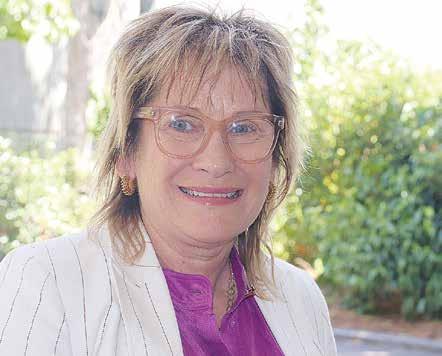
seen for example the growth of the wine and kiwifruit industries. Forestry has also grown, but with pressure for the expanse of urban areas, highly productive land is facing challenges.
Dynes says the motivation for change now is different to what it was many years ago.
“As we move into a future world where we have a change in climate
and we have regulations, business as usual will not work in some parts of the landscape, so to meet regulatory requirements we will need change,” she explains.
But Dynes quickly points out such changes will also bring opportunities, as has happened in the past. One interesting driver is consumer preferences, which have and will lead to new crops
being grown. However, she adds that trying to second guess consumer preferences decades out is somewhat problematic. Dynes says to some extent it’s not about what can we grow, it’s where the markets are, because we are a ‘discerning market supplier’ and that is the challenge.
“But we do know that if we grow high quality food there is a market
NZ FARMERS have a proud history in adopting science to drive production, productivity and community outcomes.
Today, for example, most dairy sheds have a computer in them and farmers will say they spend many hours inputting and analysing data.
One of the emerging items on dairy farms now is wearable technology, such as collars on cows that can measure a multitude of factors – including whether or not a cow is in heat, but also other factors such as feed intake. These also measure aspects of an animal’s behaviour and other key insights which have potential to save time and deliver benefits.
According to Dynes, such technology enables farmers with large herds to easily monitor individual animals like they did in the past.
She believes precision agriculture is one tool that has a lot to offer in dealing with the complexities of land use change. She says it’s a big interest of hers and should help find more efficiencies.
demand. Then we can grow that market as we have seen through our cooperatives, in the likes of Fonterra and Zespri.
“Looking into the future, NZ will still have a livestock sector because much of our landscape
But Dynes adds, like all technologies, the users have got to see value in using it and it has to fit in with their business systems. She says right now people are capturing the advantage of precision agriculture.
“Let’s face it, every farm has biological variability. I think that in terms of meeting our environmental expectations on things like greenhouse gases, precision agriculture can offer an enormous amount,” she says.
Dynes says getting greater uptake of science and technologies is something that is still a work in progress.
She says AgResearch is asking the question of itself as to whether it is sufficiently connected to farmers and rural advisors. While she personally has many opportunities to engage with farmers, many staff in AgResearch have fewer opportunities, and we need to understand the importance of this connectivity to end-users in growing the impact of our science.
is best suited to livestock and the dairy and red meat sectors will continue to be a significant part of our economy. We will see change, and this will be driven by opportunity and need,” she says.
According to Dynes,
WEATHER EVENTS like Cyclone Gabrielle that hit over one year ago have landed two of the country’s biggest fruit and vegetable traders with massive trading losses.
T&G Global, which grows apples, tomatoes, citrus and blueberries, and partners with over 800 independent growers to export to 60 countries, saw its operating profit plunge from $20 million in 2022 to a whopping
$46m loss last year. The listed company’s net loss before tax ballooned to $64.2m, compared to a $3.3m loss the previous year.
Another listed company, Seeka Limited, posted a half-year net loss of $14.5m, down from a $6.5m profit the previous year.
Both companies blame weather events for their financial woes. Cyclone Gabrielle, which hit North-
land and Hawke’s Bay in February last year, left some orchards in ruins.
T&G Global chair Benedikt Mangold says their loss reflected both the cyclone’s physical and fiscal impact and a challenging year in terms of growing and economic conditions.
“The February cyclone completely disrupted our apples operations in Hawke’s Bay for five days, destroyed orchards on some 13% of our planted
hectares and interrupted our supply chains for export and domestic crops. The cyclone, along with five-year highs in rainfall and lows in sunshine across the year, made conditions more than challenging.”
Across at Seeka, a difficult 2023 harvest was extended beyond cycloneaffected areas and even in Australia.
But the company is also bouncing back with better marketing and sus-
our mixed cropping farmers will keep evolving where there are markets. She says in terms of perennial crops, a big capital investment will be required.
@rural_news
facebook.com/ruralnews
pending dividends and reducing overheads. Seeka is one of the country’s largest kiwifruit growers and also exports apples and pears.
Seeka chief executive Michael Franks says the 2023 harvest was difficult right across the horticultural sector, as a warm wet winter, cyclones and hail significantly impacted orchards in New Zealand and Australia. – Sudesh Kissun

Bremworth

DAMAGE CAUSED by Cyclone Gabrielle to Bremworth’s Napier plant resulted in severe capacity constraints for the carpet maker and a poor half-year performance.
The listed company says it has been unable to grow revenue, resulting in a $1.7 million net loss for the half year to December 31, 2023. Half-year revenue reached $39m – 17% below the same period in 2022.
However, it’s not all bad news for the company. The message from its retail partners is that demand for Bremworth products continues.
Chief executive Greg Smith says with the pending near-term return of full production volumes, a strong cash balance and the release of new ranges, a corresponding lift in revenue is anticipated for the next financial year.
“As supply improves, at the quality and quantity required, we will be able to meet existing demand and rebuild our inventory position,” says Smith.
“This then supports participation in larger commercial developments and the expansion of our in-store presence in over 100 Australian retail stores.”
Bremworth has focused on reducing administration and dis-
BREMWORTH ANTICIPATES a return to full production volumes for the carpet business within the next three months.
The listed carpet maker says its uniquely designed new carpet ranges will be released across New Zealand and Australia.
Chief executive Greg Smith says these highly anticipated product innovations are expected to be well received by retailers and consumers.
“While the weather events of last year forced the rationalisation of some of our ranges, these new releases, our first since the cyclone, are expected to provide a welcome boost to revenue in FY25.”
tribution costs to better match its reduced revenue.
However, Smith points out that administration costs would have been about $1m less after excluding litigation costs and the costs relating to the board-led strategic review.
“Once we can match supply with demand in each of our markets, we believe that our post-cyclone adaptation will yield a meaningful improvement to our financial results,” he says.
Flooding caused by Cyclone Gabrielle caused extensive damage and forced Bremworth’s Napier facility offline. The Napier plant supplied 100% of dyed fibre and about 75% of yarn to its Auckland and Whanganui factories.
Smith says Bremworth has worked hard to establish a fully functioning hybrid supply chain but
admits that it has been exceptionally difficult.
“The Napier plant made unique yarns that are hard to recreate anywhere in the world. That said, we have had no choice but to embark on this mitigation strategy.
“At the end of 2023, we had replaced around 60% of our yarn requirements and expect this to be at around 90% by the end of March and fully recovered by the end of FY24.
“The hybrid supply chain we have created minimises the ongoing yarn supply constraints and revenue losses. A return to yarn production in Napier would offer further security to our supply chain.
“Our yarn plant in Whanganui, which produces world-leading specialty yarn, has been fortified by strategic partnerships with both domestic and over-

seas yarn manufacturers who align with our quality standards, whilst Napier remains offline. These collaborations will enable us to scale production and help insulate our supply chain from potential future shocks.”
Insurance claims around the Napier plant damage are ongoing.
Smith says it is working closely with insurers concerning reinstatement at Napier under its material damage policy.
Stage 1 of the rebuild, involving the reopening of a dyehouse, has been completed, with dyeing operations now underway.
“The staged approach to reinstatement of the plant is consistent with our objective of providing security of supply for the future while complementing the hybrid supply chain.
“The loss of our continuous finishing line at Napier has been particularly hard to find a solution for and is the next stage being considered.
“Loss of sales, margin losses and ongoing fixed costs incurred during the indemnity period will form the basis of our business interruption insurance claim.
“Investment has also been made in machinery in Whanganui to strengthen our capability to make new products and increase production volumes,” he says.

WITH INCREASING
and rising financial challenges, a well-balanced combination of carrot and stick will be needed to help dairy companies reduce greenhouse gas (GHG) emissions.
That’s according to Rabobank’s recent Global dairy companies taking the lead in reducing greenhouse gas emissions report. It points out that dairy companies are in a delicate position to balance the interests of their milk suppliers and other stakeholders, all while tracking other sustainability targets and maintaining healthy margins.
“Reducing emissions – especially scope 3 emissions that happen on the farm- has been on the agenda of leading dairy companies for many years,” says the report.
“Historically, productivity gains have led to more efficient milk production and lower emissions per kilogram of milk, but more comprehensive reduction strategies are needed.”
Rabobank dairy analyst Richard Scheper says that for dairy companies to reach the 2030 climate goals and beyond, accelerating the adoption of on-farm GHG emissions reduction measures is crucial.
“Reductions originating from productivity and efficiency gains may diminish over time and gains from new technologies may take years to achieve.”
Rabobank Head of Sustainable Business Development Blake Holgate points to their 2023 The great New Zealand balancing act white paper for some of its key build-
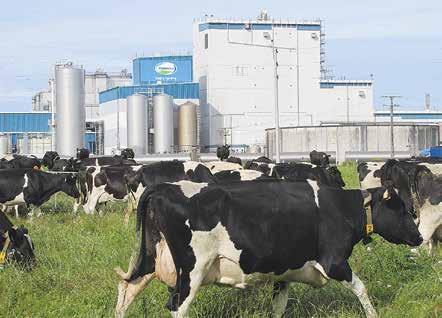
ing blocks to achieve emissions efficiency and properly incentivise farmers.
“Joint efforts across public and private sectors, market access and trade agreements linked to sustainability and careful offsetting of emissions are essential to deliver
strong stories on the change executed along the food supply chain and its benefits.”
Holgate adds that Rabobank is currently developing a further white paper to be released later in 2024 to explore the topic further.
In 2010 the Interna-
tional Dairy Foundation created the first guide for a standard life-cycle assessment methodology and most countries in the global dairy Top 20 have set climate targets or made a voluntary commitment with the Science Based Targets initiative (SBTi).
However, as target levels, timing, and scope can differ among companies depending on their regulatory environment, corporate structure or public pressure, this can create inconsistent expectations and subject dairy companies to reputational and litigation risks if targets aren’t achieved.
For example, in many countries the main source of GHG’s is fossil fuels from energy and industry, thus those countries contribution to reducing GHG’s mostly focuses on energy and industry.
This industry focus could include dairy processing emissions, but not onfarm emissions.
But in New Zealand the main source of GHG emissions is agriculture, thus there would be greater scrutiny and higher standards placed on New Zealand’s agricul-




tural emissions than most other EU countries.
The report warns that market access could be restricted or limited if competitors are meeting their targets and the market demands that other companies do so.
It also says reaching these targets will require a balanced combination of incentivising carrots and potentially corrective sticks to accelerate onfarm adoption of a wider variety of GHG emission reduction tools.
“It’s of the utmost importance that all parties and stakeholders in the value chain contribute financially to these efforts – from the farm to the end consumer, plus (local) governments via stimulating subsidies (carrots) and/or taxes (sticks) and other stakeholders, such as banks.”

WHILE THERE is a degree of optimism among Hawke’s Bay apple growers, it somewhat masks a real and uncertain fear about the future.
John Paynter, the executive chair of the Yummy Fruit Company, one of the largest family owned orcharding companies in the region, says behind the scenes everyone – large and small – is worried about cashflow and their ability to borrow more capital to get their businesses back on track.
He says while horticulture is a great mechanism to get value from the land, it requires significant investment. He notes that if you have borrowed money to invest in crops or fruit and you lose them, there is a challenge to borrow again, depending on your asset base.
“I would say in Hawke’s Bay there are significant holes in big horticultural operators’ revenue lines and

that will actually hurt,” Paynter told Rural News. “Behind the scenes a lot of people won’t be bankable or marginally bankable and their situation could well continue to deteriorate.”
He says the rule that trading banks
operate under in NZ are not conducive to the present needs of the agriculture sector. He discovered that there is a lot of truth in the claim that banks are ‘fair weather friends’.
Paynter claims banks are fine if you don’t have debt, but don’t appear to have the appetite to deal with the sort of situation that orchardists and growers are facing in Hawke’s Bay at present.
According to Paynter, a lot of companies like his have been in development mode over a number of years at considerable cost and debt. But he says Yummy Fruit have lost 45 hectares of trees – many new plantings in the Esk Valley – which will put his company under financial pressure going forward.
He says it’s not only orchardists that have been hit by the cyclone. Paynter knows of cropping farmers who planted squash, which was wiped out in the springs rains last year and their maize crops were destroyed by

PAYNTER SAYS the long-term financial implications of Cyclone Gabrielle may see many of the larger businesses like his break with tradition and seek outside capital to put themselves in a stronger financial position.
Cyclone Gabrielle.
“The cyclone has certainly kneecapped a lot of businesses in the Bay,” he told Rural News
Paynter says, in theory, people should not be able to recover from an event of this magnitude. However, he reckons they have taken the view to “farm themselves out of the crisis”.
To that end, his company is applying for the Kanoa fund for assistance. This is a $250 million fund set up by government to help people affected by the adverse weather events in the North Island.
What has surprised Paynter is that, so far, there have been only 17 applications lodged for Kanoa assistance. He believes that while the Kanoa money contains sweeteners such as interest free until a company gets back on its feet, it is still ultimately a debt that has to be paid back.
“One of the reasons for the lack of applicants is that people don’t have an appetite for more debt.”
Paynter believes that the recovery for Yummy Fruit will be long. He says they made a loss last year and expect to do the same again this year but he is hopeful of being in the black in 2025.
As well as getting the company back on its feet financially, the company is heavily focused on looking after their staff and keeping them in a positive and enthusiastic state of mind as Yummy Fruit climbs back into profit mode.
Paynter is full of praise for the efforts of Apple and Pears NZ, who he says have done a great job for local growers. He is less impressed with other organisations and he says the time has come for a review to get organisations to define their respective roles and deliver.
“This all comes down to leadership at all levels,” he told Rural News
“Right now, we need the best possible leadership from central and local government, industry, business and all those involved in the sector. It’s a time for all of us – young and old – to step up.”

should we not have sufficient flow of livestock.”
ALLIANCE GROUP says
following delayed livestock flows – due to ideal growing conditions in both the North Island and the southern South Island – sheep and beef processing numbers are starting to crank up in the move to autumn.
In an update to suppliers in late February, the meat processor and exporter says it is continually aligning its processing capacity with livestock flows to ensure the company efficiently optimises cost structures.
“As a result, the livestock flows over the next few weeks are essential and we have put some plants on ‘day-by-day’ notice, which enables us to reduce capacity swiftly
The company says it is also monitoring the drier conditions in parts of the country. “For example, Marlborough is reportedly experiencing its driest weather in almost a century with just 94mm of rain – almost half the average – falling between June and January.”
Alliance also warned suppliers that the next couple of months will see reduced days available for processing due to public holidays – such as Easter and Anzac Day – as well as when it switches sheep chains to beef production from April onwards.
“We are mindful that there could be a squeeze on capacity when volumes peak,” it told farmers. “We encourage you

to liaise with your livestock representative so they can update forecasts to allow us to plan for the intended flows.”
Meanwhile, the meat
processor and exporter says, while there is some improvement in recent economic data out of China, any lift in lamb pricing is some way off.

•
•
•
•
•
•

“Early feedback post Chinese New Year indicates no material change to the market,” it told suppliers. “Meanwhile, North American demand continues to improve with both retail and food service showing positive signs.”
Alliance adds that EU demand is steady with in-market inventory continuing to reduce.
“Commodity levels in the UK remain steady with moderate demand.”
It adds that the Middle East continues to provide a volume alternative for commodity products previously destined for China, but issues in the Red Sea have impacted the supply chain, adding
increased costs and time to deliver to market. On the mutton front, Alliance says Chinese demand remains steady, particularly for full carcases, but the overall market is flat.
“We are continuing to diversify into wider Asia, namely Taiwan, Malaysia and Singapore. The EU/ UK and North American markets remain a viable option for certain cuts.”
For venison, the company says negotiations for 2024 key account frozen programmes are continuing with demand firm, particularly for middle cuts. But it warns that leg items remain ‘challenging’.
“Manufacturing trim demand is improving
with various market alternatives now appearing.”
In the beef market, Alliance says consumption post-Chinese New Year remains steady with demand across beef cuts stable, but bone and offal pricing remains under pressure.
“Going forward, the key to China is market confidence, which at this stage remains subdued due to consumer concerns about the economy,” it adds.
Alliance says it’s confidence is growing with the greater certainty around future pricing levels. “The co-operative is continuing to place product in markets where we can realise the best carcase returns as there are variations in pricing appreciation across geographies.”
The company adds that the short-term outlook is steady, albeit patchy across most major trading markets, except for China where ongoing economic instability and consumption is subdued.
“China is important as the ‘anchor’ and raises the price floor globally for all items. Early indications are the Chinese New Year will not provide the stimulus it has historically. As a result, we are actively moving forward contracts into alternative markets.”



HUNDREDS OF tractors gathered on Brussels’ Luxembourg Square in the Belgian capital in early February.
On the Paris-Brussels motorway, angry farmers wrote in huge yellow letters, visible from afar: “Ursula, we are here!” It was chalked on the road with equal parts defiance and desperation, warning European Commission head Ursula von der Leyen not to ignore farmers’ pleas for better prices and less bureaucracy.
Farmers hit the Belgian capital to call on European leaders to put an end to free trade agreements between the European Union and third countries. They want a review of agreements such as Mercosur, for imports to be subject to the same rules as
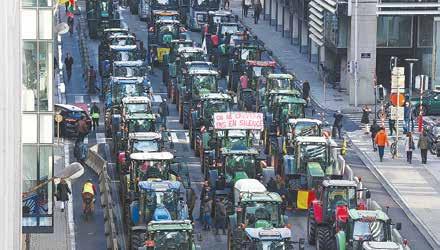
European agricultural products, and for the “costly” bureaucracy of agricultural and environmental regulations to be made more flexible and simplified.
So why are EU farmers protesting now?
Over the past two years, the problems facing farmers have reached critical mass.
Droughts, fires and floods blamed on cli-
mate change devastated crops. The Covid-19 pandemic hit the economy. Russia’s war in Ukraine sent energy prices soaring. There was runaway inflation, with agricultural products often unable to keep pace.
“European farmers have been under increasing pressure from many sides,” said European Commission vice-president Maros Sefcovic.
He said that in southern Spain, some water reservoirs were at only 4% capacity.
Forest fires have wiped out around 20% of Greece’s annual agricultural income. “The value of grain production fell by 30% last year – from €80 billion to less than €60 billion.”
The rallies are part of farm protests across the 27-nation EU that
have shown how just a few hundred tractors can bring traffic to a standstill in capitals from Berlin to Paris, Brussels and Rome.
Millions of people across the EU have faced disruption and struggled to get to work or had doctor’s appointments cancelled because protests blocked their way.
“It is important that we listen to them,” said Belgian Prime Minister Alexander De Croo. They face huge challenges from adapting to climate change to tackling pollution, he said.
The European Commission has announced plans to protect farmers from Ukraine’s cheap war exports. These still need to be approved by the EU’s 27 member states and the European Parliament but represent a sudden and symbolic concession.
FRANCE’S TWO major farmers unions, last week, suspended protests and lifted road blockades across the country.
The move came shortly after the French prime minister unveiled a new set of measures they see as “tangible progress”.
Farmers have been protesting for days across the country to denounce low wages, heavy regulation and unfair competition from abroad.
The president of the Young Farmers union, Arnaud Gaillot, spoke alongside the head of France’s biggest farmers union FNSEA.
“We call on our members to suspend the blockades.”
FNSEA chief Arnaud Rousseau said they had been heard on a number of points, “including emergency measures to financially support struggling farmers and wine producers”.
Earlier, Prime Minister Gabriel Attal announced a new set of measures, coming on top of other promises made in recent days. His speech came as convoys with hundreds of angry farmers driving heavy-duty tractors created chaos outside the European Union’s headquarters, demanding leaders at an EU summit provide relief from rising prices and bureaucracy.
“The question is currently being asked throughout Europe: is there a future for our agriculture? Of course, the answer is yes,” Attal said.

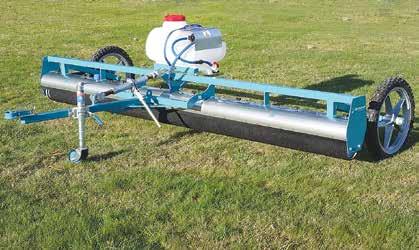

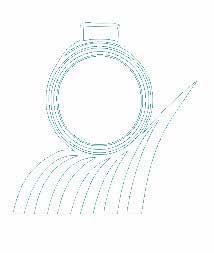
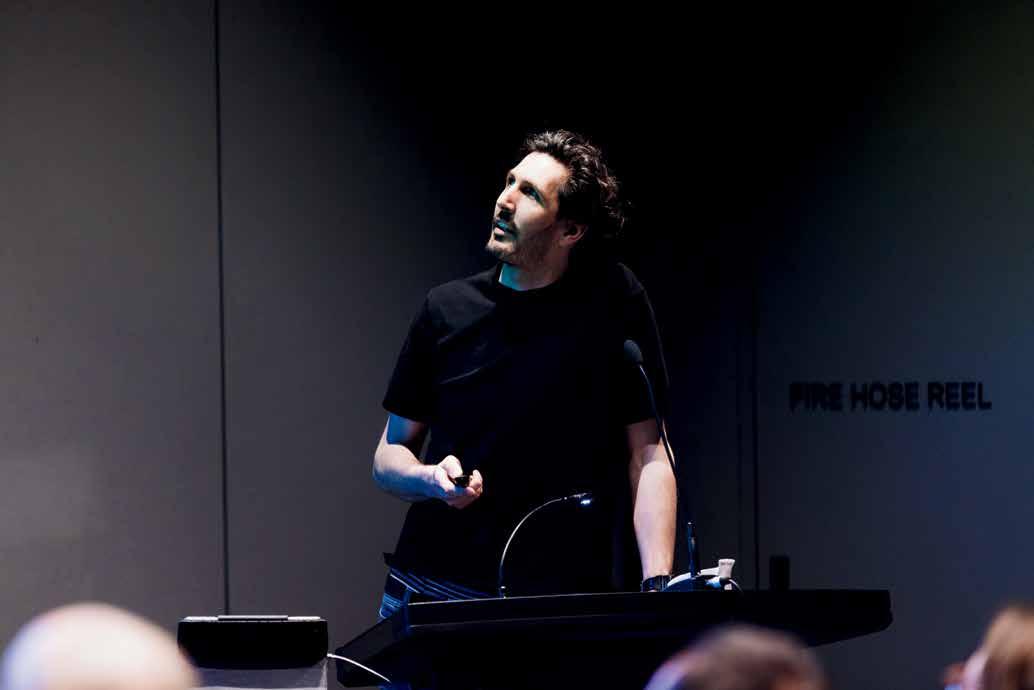




WHEN THE country elects a new government, we all know there will be policy changes as outlined on the hustings.
So, it is unlikely councils around the country were unaware the new Government intends to reform the Resource Management Act (RMA), and that those reforms would impact district plans. These reforms were clearly telegraphed.
And yet it’s clear that some councils – particularly those with activist staff members – are trying to implement district plans under the previous Labour government’s rules before the new coalition Government can change the RMA.
One example is the Waitaki District Council (WDC), which is trying to push through its Waitaki District Draft District Plan to notified stage.
Similarly, concerns have also been raised about the actions of Otago Regional Council (ORC) ploughing ahead with a controversial water plan.
Some are taking steps to rein in councils that are trying, almost in defiance of the democratic process, to push through district plans and other planning processes despite the pending and clearly signalled reforms.
North Otago farmers Jane Smith and Simon Williamson, who have written to RMA Reform Minister Chris Bishop and Local Government Minister Simeon Brown, fear the WDC’s new draft district plan identifies 44,000ha to be reclassified in ways that will restrict farmers’ ability to farm it. Smith and Williamson claim this will affect 1638 private property owners, involving 5979 parcels in the Waitaki District. “Many of whom are unaware of these classifications on their freehold land.”
The fear here is a downstream effect on landowners likely to reduce their lending ability and cause pressure from banks to repay debt due to the subsequent loss of equity.
This is just one example.
The Government now needs to send a clear signal to councils to cool their jets. Notwithstanding the democratic principle here, on a practical note, there is no point wasting ratepayers’ money rushing to implement plans that may change substantially over coming months.
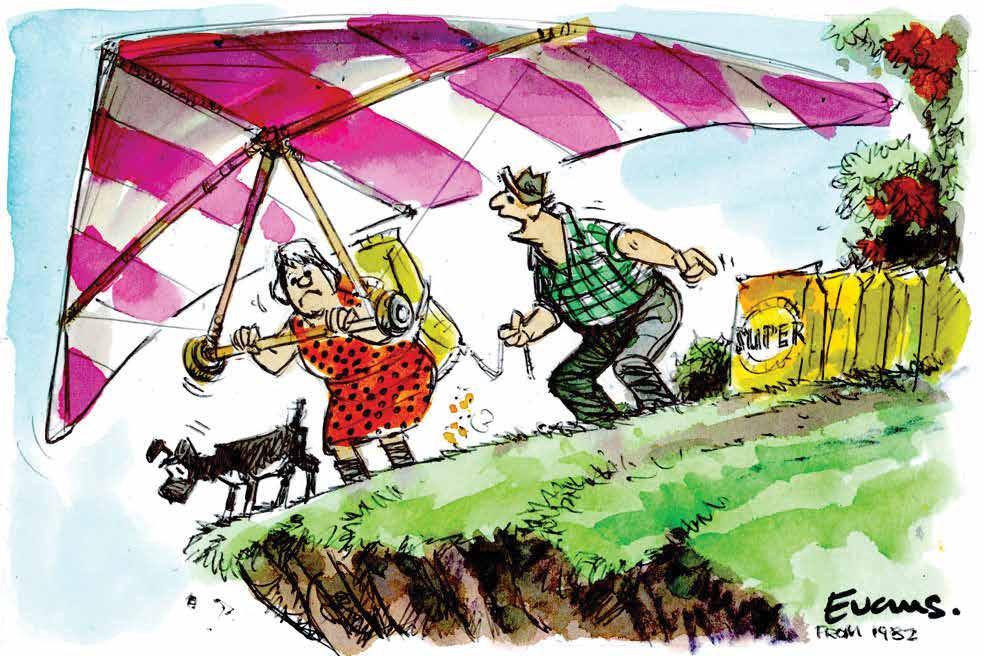
Your old mate can’t believe how that infamous environmental vandal and professional stirrer Mike Smith is now being beatified in some circles as an eco-warrior.
In a surprise move, the Supreme Court recently ruled in favour of Smith’s climate case finding that he has the right to sue the seven big companies – including Fonterra – for their role in ‘causing’ climate change. The court said these companies may be liable for the harm their climate pollution causes.
In a statement, Smith said he’s “delighted with today’s decision, and it is a vital step in holding climate polluters to account. The planet is burning, and we need to hold those responsible to account”.
Those of us who have been around the traps a while will well remember Smith cutting down the lone pine tree on One tree Hill in Auckland. Not sure how the supposed ecohero’s actions in that case saved the ‘planet from burning’.

The Hound reckons the demise of NewsHub (3 News to those of us a bit longer in the fang department) while sad is probably a reflection of how some media have lost touch with their audiences by going down a certain line and losing viewers, readers and listeners. The role of supposedly impartial media was recently borne out to yours truly by the actions of the Science Media Centre (SMC) –funded by the Ministry of Business, Innovation and Employment (MBIE), that is we the taxpayers – when offering ‘experts’ to comment on the disbanding of the Māori Health Authority. The SMC, which claims to be a ‘trusted, independent source of information for the media on all issues’, offered up two supposed experts for comment. Unfortunately, both had a clear bias towards supporting the MHA. No wonder people are losing trust in media when only one view is put up as comment.
This old mutt suggests the new government is going to have to move fast to rein in a number of district and regional councils around the country who seem hell-bent on trying to push through their own agendas. A good example is the Otago Regional Council (ORC), which has been warned against ploughing ahead with a controversial water plan, despite recently meeting with Resource Management Act Reform Minister Chris Bishop to discuss how the new government’s plan to update national freshwater management policies would affect the council’s under-development land and water plan. When Bishop informed the ORC in December that their June deadline had changed, the ORC issued a statement the following day saying, no, it had not. Bishop needs to let ORC know – quick-smart – who is in charge and that it’s not them!
AUCKLAND
Pollard Ph 021 963 166 stephenp@ruralnews.co.nz
WAIKATO SALES REPRESENTATIVE:
Your canine crusader reckons moves by the new government to try and breathe new life into the country’s ailing wool industry will have little real impact. It recently announced that over the next three months, Agriculture Minister Todd McClay will be joined by Mark Patterson, in his role as Minister for Rural Communities and delegation as Associate Minister responsible for wool on a national woolshed roadshow. “Under my delegation as Minister responsible for wool I will be working with farmers to rebuild the industry into a strong sector that recognises the exporting and sustainability potential of the product,” Patterson says. Perhaps a better way to go would be a detailed look into the effectiveness of the Strong Wool Action Group (SWAG) – chaired by Rob Hewett – that despite major taxpayer funding has done SFA to lift the profile or prices of NZ strong wool.
WELLINGTON SALES REPRESENTATIVE:
Mackay Ph 021 453 914 ronm@ruralnews.co.nz
SOUTH ISLAND SALES REPRESENTATIVE:
HEAD OFFICE POSTAL ADDRESS:
PO Box 331100, Takapuna, Auckland 0740
Phone 09-307 0399
PUBLISHER:
Brian Hight Ph 09 307 0399
GENERAL MANAGER:
Adam Fricker Ph 021-842 226
CONSULTING EDITOR:
David Anderson Ph 09 307 0399 davida@ruralnews.co.nz
Wise Ph 027 369 9218 lisaw@ruralnews.co.nz
Sutherland Ph 021 221 1994 kayes@ruralnews.co.nz


One month out from the National Rural Health Conference 2024, we caught up with keynote speaker Dr Cath Cosgrave. She is an internationally awarded ‘rural change-maker’, strategic advisor, trainer, coach, presenter, and evaluator based in Australia. With this broad set of skills, we asked her how she would sum up her work
“I WORK with rural leaders and change-makers to help address chronic workforce shortages to support the health and wellbeing of people living rurally by ensuring the local availability of professional services,” Dr Cath Cosgrave explains.
Recognising the conference’s role in advancing rural health initiatives, Cosgrave eagerly accepted the invitation from Dr Grant Davidson, chief executive, Hauora Taiwhenua to be a keynote speaker.
The conference’s themes of equity, leadership, and workforce growth strongly align with her community initiatives, making her participation a natural fit.
Reflecting on her decision to accept the invitation, Cosgrave emphasised the conference’s ethos of “Growing stronger, together” which resonates with the principles of the Attract Connect Stay Framework and the Community Connector Program, which
are the foundation of her work in Australia. These initiatives prioritise community-driven efforts to strengthen healthcare and social care workforces in rural communities.
Cosgrave’s keynote address and workshop at the conference will provide attendees with practical strategies for enhancing rural health workforce stability and resilience.
Rural communities are facing unprecedented challenges due to climate change, economic

uncertainty, and in the health sector, a workforce that is at breaking point. Through realworld successes and evi-
dence-based strategies, attendees will gain a deep understanding of how whole-of-communitydriven efforts can sig-
nificantly enhance rural health outcomes.
Furthermore, Cosgrave envisions a future where rural communities fully embrace the philosophy of “Growing stronger, together”. Inspired by the conference theme, she emphasises the importance of genuine integration and commitment from healthcare professionals and their families to rural communities.
Through initiatives like the Attract Connect Stay Framework and the Community Connector Program, Dr Cosgrave believes that rural healthcare can thrive, supported by equity, resilience, and sustained growth. Community participation and leadership will play a crucial role in ensuring the vitality and responsiveness of rural healthcare, enriching the lives of residents and healthcare pro-
viders alike.
“The conference is an opportunity to interact with a diverse group of rural health professionals and stakeholders, sharing tangible outcomes and empowering attendees to drive positive change in their communities,” Cosgrave adds.
The National Rural Health Conference is being held in Wellington from the 5-6 April, bringing together a broad spectrum of rural health care workers and supporters from across New Zealand.
“This is an important and timely opportunity to connect and share knowledge that can influence the New Zealand health system reforms and ensure that every rural New Zealander, Māori, and non-Māori, has the opportunity to thrive and enjoy healthy and rewarding lives,” says Davidson.

Introducing AberLasting from our DoubleRoot hybrid clover range. DoubleRoot is Germinal’s exclusive hybrid clover — a cross between white clover and Caucasian clover.
Encapsulating Germinal’s breeding innovation, farmers gain the dual advantages of both varieties in one clover — a winning formula for increased animal performance, soil health, reducing nitrogen and growing a more sustainable and resilient pasture.
DoubleRoot differs from conventional white clover as it produces underground rhizomes and above ground stolons. This unique dual root/stem feature is key to DoubleRoot’s resilience to temperature extremes and treading damage under grazing.
Increase your farm efficiency and decrease your costs with DoubleRoot — a world first.



opinion article (December 5)
“Carbon Credits a Discredit” rekindled for me questions about climate change, the ETS, and
indeed the whole matter of climate change formerly known as global warming.
There is much confusion as to distinguishing the actual man-induced impact.
I have pondered why the term “global warming” reverted to “climate change”? That in itself is confusing. Climate change has always been happening in cyclic fashion.
There’s scientific evidence.
In scientist George Gibbs’ comprehensive and fascinating book Ghosts of Gondwana the astonishing revelation that about 15 to 20 mil-

lion years ago, in Central Otago, there was a large freshwater lake ecosystem that by evidence of fossils, had crocodiles, turtles, eucalyptus trees and other warm species.
“Their presence is indicative of a sub-tropical dry climate,” wrote Gibbs.
cyclones and extreme weather events are by no means a recent phenomenon.
Grant wrote in his book Hawke’s Bay Forests of Yesteryear, published 1996, that the erosion Colenso saw in the 1840s “was no doubt the effects of gales and heavy rainfalls.”
www.ruralnews.co.nz
The climate must have warmed to allow sub-tropical species to not only exist but thrive. Then it cooled to its present day climate of cold winters and hot summers – again proof of the dynamics of climate change.
There have always been periods of climate change – warming and cooling.
In the 1980s a hydrologist/botanist Dr Patrick Grant chanced upon early missionary-explorer William Colenso’s observations of the Ruahine Range in the 1840s. Grant was intrigued.
He scientifically identified eight “warm erosion” periods stretching back to 350-450 AD. Between warm erosion periods generally being 50 to 100 years each, “are cooler, tranquil intervals.”
So much for tropical Cyclone Gabrielle. Perhaps it was just another of many, over many centuries? Natural climate cycles with warming and cooling and extreme weather events have always been.
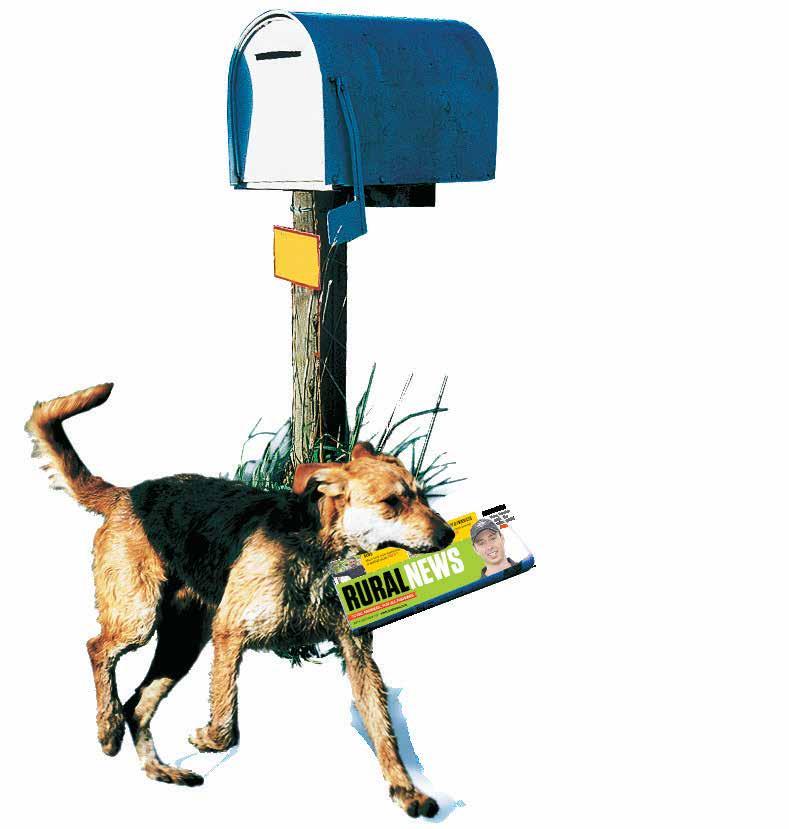

Catchment boards and extreme green groups like Forest and Bird had long blamed the “extensive land slips” and “creek beds choked with dead trees and masses of stone” on wild deer. But Colenso’s diaries clearly showed the land slips and choked stream beds had been there decades before the first deer were liberated.
So, Grant set about researching the causes.
The clue was in climate.
By 1985, he had defined at least seven periods of accelerated erosion since the great Taupo eruption 1800 years ago.”
The warm periods are often accompanied by severe storms such as Cyclone Alison (1975) and Cyclone Bola (1988).
In the Pohangina saddle in the Ruahine Ranges, during Cyclone Allison, a rainfall gauge recorded a 24 hour rainfall of 400mm (16 inches).
William Colenso’s diaries testify tropical
The problem I have with the current alarm calls being sounded about climate change is the lack of distinguishing between natural climate change and human induced climate change.
In his article Leo Cooney wrote “the socalled experts are only taking selective sequestration of carbon into their equation” and went on to add “if all sequestration was measured, such as from all our plantsincluding pasture.”
Bizarrely, the government’s Emissions Trading Scheme (ETS) ignores the carbon sequestering value of pasture and in a bizarre, illogical rule, any trees or shrubs under 5 metres tall are excluded from sequestering calculations. Yet many native plants are, even at maturity, under 5 metres in height.
• Tony Orman is a Marlborough-based agricultural journalist and has had some two dozen books published on trout fishing, deerstalking and conservation.
RURAL RETAILER PGG
Wrightson (PGW) is feeling the impact of the current rural downturn, reporting a 40% drop in net profit to $12.7 million in the six months to December 31, 2023.
PGW’s operating earnings before interest, tax, depreciation, and amortisation (ebitda) fell by 24% to $36.6m and total revenue decreased nearly $25m, or 4%, to $560.9m.
Revenue from its retail and water business dropped $21.7m to $478.3m with operating ebitda down $9m to $40m. Its agency business – comprising livestock, wool, and real estate – produced an operating ebitda of $1.4m, down $2.2m, with revenue dropping $3.1m to $81.6m.

The company says both areas of the business have been impacted by decreased on-farm spending and weak commodity prices.
Net interest-bearing debt was up $1.4m
to $96.9m compared to December 31, 2022.
The company also renewed and extended its bank facilities in December, with total facility limits of $185m. That’s up $25m, allowing for
NEW ZEALAND Rural Land Co (NZL) has announced its intention to reinstate the company’s dividend and amend its dividend policy.
The company made the announcement amid the release of its annual results, which saw it post a net profit after tax (NPAT) of $10.9m, up from $2.5m announced in September 2023.
The company, which owns 16,063 hectares of rural land, also reported Adjusted Funds From Operations (AFFO) of $6m.
“NZL’s intention has always been to pay regular semi-annual dividends with an interim dividend paid in October and final dividend paid in March each year,” NZL chair Rob Campbell said in a statement to the NZX.
He says the amended dividend policy targets a payout of 60-90% of AFFO.
“The payout range grants the company greater flexibility to deploy NZL’s cash operating earnings in ways considered most beneficial to increasing shareholder value,” Campbell says.
The interim dividend will be based on results for the 1 January 2024 to 30 June 2024 and is set to be paid out in early October.
The announcement comes on the heels of a partnership between the rural landowner and Australia-based private market investment manager Roc Partners.
The partnership, announced on 19 January 2024 and settled on 9 February, saw Roc Partners acquire 25% of NZL’s assets at a value of $44.2m.
NZL says it has used the proceeds to
repay the $11.8m on a convertible note it drew down in April 2023 to partially fund its forestry acquisition.
“A further $20.7m of the proceeds were used or committed to fund orchard and forestry land acquisitions announced to the market on 20 February 2024,” Campbell says.
Meanwhile, Allied Farmers, NZL’s external manager, has reported a net profit before tax (NPBT) of $1.945m for the six months ended 31 December 2023, down from $2.129m for the same period in 2022.
The profits reflect Allied Farmers’ 67.7% ownership of New Zealand Farmers Livestock Limited (NZFL) and 100% ownership of New Zealand Rural Land Management Limited Partnership (NZRLM). In a statement to the NZX, the listed company said it would not be paying dividends for the period while it continues to use tax losses.
“The board strongly believes that in the short term, retaining and redeploying earnings is in shareholders’ best interests,” the company said in a statement to the NZX.
It said that because NZL did not complete any asset transactions in the half-year period, NZRLM was not paid any transaction fees.
“However, NZL’s rural portfolio increased in value, from which NZRLM received performance fees,” the statement reads.
“The outlook for NZRLM remains positive, driven by a larger opportunity set for NZL and an expanding international investor base at NZL.”
– Jessica Marshall“future growth opportunities including GOSTOCK.”
Meanwhile, PGW’s shareholders will have to wait until the end of its financial year to see whether they’ll get a div-
idend. Following its half-year result, the rural retailer suspended the interim dividend, saying it doesn’t want to add debt “in the face of rising interest rates”.
The company believes it is “prudent” to wait until the full year before reviewing the dividend payout ratio – “if any”.
Last financial year, PGW paid a full year dividend of 10 cents per
share.
This half-year report noted that given the “current challenges” faced in the sector as well as the broader economy and the impact on the business, the board had determined not to pay an interim dividend.
“The board considers that this is an appropriate and prudent measure to take at the present time.”
PGW’s board is also looking at its ongoing dividend payout ratio, given the need to “strike the right balance” between sustainable distributions for shareholders while retaining sufficient earnings in the best interests of the company.
PGW also updated its full-year guidance, expecting it to be around $50m – down from the $52m it issued in October last year.


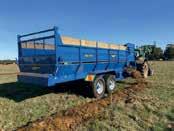

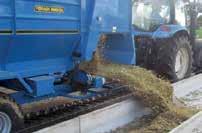

HIGH-FLYING RURAL
ambassador Courtney Davies is encouraging young women to seek a diverse range of experiences as they carve out a career path – with a top bank chief executive endorsing the approach.
A Dairy Flat local, Davies, who is 28, has just finished up after four years working for an environmental leadership charity while completing her MBA.
In 2023, she completed a short stint as a guest tutor at the King Abdullah University of Science and Technology in Saudi Arabia. Her dual Masters qualifications from Massey University – an MBA and Master of Natural Science – stood her in good stead there, putting her among nine other international tutors invited to attend.
“It was an incredible opportunity,” she explains.
“We worked with some of Saudi Arabia’s top young people, covering areas including desert agriculture, desalination, Red Sea research and computational bioscience.”
Davies also recently attended a ten-day conference in Tanzania –the Africa Food System Forum – as part of her role with the Next Generation Ag Impact Network (NGAIN), which

she leads.
She spoke with ANZ New Zealand chief executive Antonia Watson as part of the bank’s Watch Women Win initiative, which highlights and celebrates female success.
Davies told Watson she is keen to explore as many different paths as possible to grow as a leader while looking for her next role. However, she had often wondered whether employers value candidates with a diverse range of experiences, over those who choose to commit to one singular field early on in their career.
“I think it can definitely be an advantage. People look for a broad range of experiences now,” Watson adds. “Some people do have a linear career – but more often you see the people
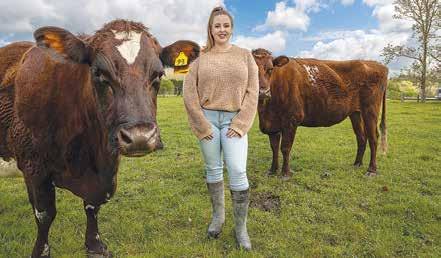
who are really successful have had other experiences.”
Watson says just because someone went to a great school and got top marks does not mean they’ll be the right fit for a role.
“Actually, that is potentially just a sign of a privileged upbringing, and it doesn’t necessarily mean you’re going to
be better at doing the job. I think it’s worth people looking for different opportunities – it’s not just about skillsets, it’s about the attributes that you have.”
Davies says she had experienced Tall Poppy Syndrome – even doubting herself when she considered posting online about her latest experiences, projects or suc-
cesses – as a result of a conversation with a previous male manager who told her to ‘reign in her ego’ as it ‘isn’t a good look’.
“I saw a quote on Instagram recently – ‘bright lights attract bugs’ – and it really resonated,” she adds.
“It’s this idea that people that shine brightly, or are in the spotlight,
FOR NOW, Davies is enjoying her time between jobs and is spending more time with her beloved cows. The award-winning Ayrshire cattle she exhibits at A&P Shows are more like pets than commercial stock, she says, and her Inca Ayrshire stud is going strong.
It was her cows that gave her a first nudge towards the sciences.
“I got into science when one of my cows got mastitis,” she explains. “I was really interested in the microbial side of it, the very small things we can’t see that have such a huge impact, and that led me into my first Masters degree.”
For her Master of Natural Science thesis, she developed a way of utilising special proteins from “bacteriophage” viruses – viruses that can kill bacteria – as a proof of concept approach which could aid in reducing antibiotic resistant diseases across agriculture and human health.
These bacteriophage proteins were isolated in a way where they could instantly kill pathogenic bacteria on contact, “like a needle to a balloon”, without impacting other bacterial strains.
Davies thinks approaches like this, as well as the adoption of other new technology, will be increasingly embraced by the New Zealand agri community in the coming decades.
“I think in the next few years there will be changes to people’s mindset around the value of our agricultural products, and more investment into increasing efficiency rather than purely destocking,” she said.
“I can see that sustainability efforts will continue to evolve. At the end of the day, both our farmers and consumers value our land – to grow increasing amounts of nutritious food and to be able to consume New Zealand-grown produce. It cannot be one without the other.”
attract critique – so that’s something I’ve struggled with, always wondering where to draw the line (if there is one) between being proud of what I have worked to achieve
and achieving in isolation.”
“But then I see the women that I look up to, and they are sharing their own successes, and are proud of that.”


AUTHORITIES IN
both the United Kingdom and Canada have now approved the use of methane-reducing feed additive Bovaer.
The product, made by global animal health company DSM, is now available and/or approved for use in 57 countries around the world –including New Zealand.
Bovaer is a feed additive which reduces methane emissions from cattle, with average reductions in dairy cows of 30%.
This is the first authorisation in the UK for a feed additive targeted at an environmental benefit.
DSM claims this authorisation means that English, Welsh, Scottish and Canadian dairy farmers will now also have a scientifically proven solution to lower their carbon footprint significantly and reliably. The company adds that the feed ingredient will be an important tool for the nearly 10,000 dairy farmers in Canada and enable them to make a substantial step forward towards their net zero ambitions.
“For the entire dairy value chain, including supporting processors, retailers, and the food services sector, it means scope 3 emissions
NZ’S ENVIRONMENT Protection Authority (EPA) gave the green light to register Bovaer in this country back in August 2023..
At that time, DSM global vice president Mark van Nieuwland told Rural News that the company was excited by the NZ EPA approval.
“This is an important first step on the NZ registration track and eventually will support farmers with their sustainability efforts to lower emissions from livestock,” he said.
The previous government had come under criticism from NZ farming leaders for the delay in approving Bovaer.
The next stage in getting Bovaer approved for sale within NZ is getting Ministry for Primary Industries approval. MPI deputy director-general Vincent Arbuckle said New Zealand Food Safety has not received an application from DSM to use Bovaer in animals here under the Agricultural Compounds and Veterinary Medicines (ACVM) Act, and it was the company’s choice when to make one.
“It’s important to note that the product is mostly used in housed feeding situations overseas, which differ from New Zealand practices,” Arbuckle explained.
of dairy can be lowered with 10-15% CO2 equivalents per litre of milk,” the company says. It also claims this will help cattle farmers in approved countries in delivering on the commitments of the Global Methane Pledge and the Climate Change Act.
DSM’s Mark van Nieuwland says the company is building a world scale production plant for Bovaer in the UK to help support global sales. Construction on the new
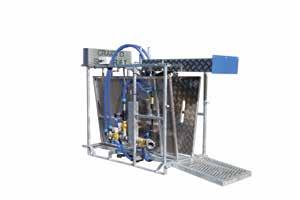
plant is well under way in Dalry Scotland to become operational in the course of 2025”, says Van Nieuwland adds that the aim is to make Bovaer available to the
BOVAER IS a feed addi-
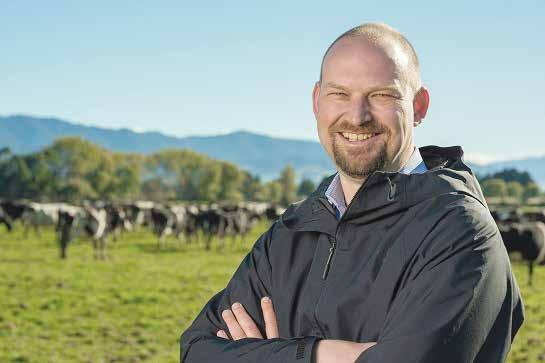
uct and its benefits to the dairy value chain. One of the primary benefits of Bovaer is its
reduce methane emissions from the digestive systems of ruminant animals. Methane is a potent
reduction can contribute to mitigating the environmental impact of livestock farming.
Preliminary studies suggest that Bovaer may positively impact animal health and performance. By promoting a more balanced digestive system, the additive could contribute to healthier and more productive livestock.
While Bovaer presents exciting possibilities, continued research is needed to fully understand its long-term effects, optimal dosage, and potential interactions with other aspects of animal nutri-
UK dairy sector early 2024 and it will work closely with the sector to introduce the prod-
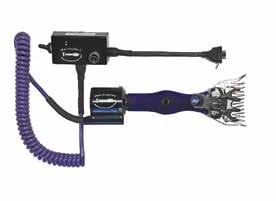







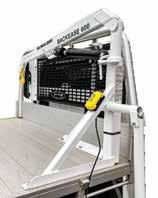




NORWOOD AND ARGO
Tractors, the Italian manufacturer of Landini and McCormick tractors, have announced an agree-
ment that gives Norwood exclusive distribution rights for the New Zealand market.
The new agreement, which starts in June, will see Norwood take over all import and whole-
sale activities for ARGO Tractors. This will be initially for its Landini brand, with the McCormick brand placed “on hold” while the new partnership is established. Norwood will be working
with the existing network dealerships throughout the transition period.
All existing ARGO customers operating Landini or McCormick products will be supported for parts and warranty


coverage under the new agreement and from an improved level of support behind the existing ARGO dealer network.
“We’re excited to enter this partnership with ARGO Tractors, who have a strong track record, manufacturing 22,000 tractors annually, with technology and sustainability front of mind,” says Aaron Smith, Norwood’s chief executive.
“Our goal is to provide exceptional distribution support to the existing network, as well as seeking out extra market opportunities.
“It’s important to us that all ARGO customers feel supported. We want them to know they will have support and access to aftersales service for their tractors, with the additional depth of extra dealerships and the largest agricultural parts warehouse in the country.”
Rod Gardner, Norwood’s national product manager, says the company is excited to be introducing some new products to the New Zealand market, such as the Landini Rex 4-120
GT RoboShift Dynamic, which won Specialty Tractor of the Year at Agritechnica 2024, and the new high horsepower Series 7 and Series 8 ranges.
“Landini has a 140year legacy of producing innovative farming solutions, offering a broad range of products, from agricultural to speciality tractors that cover all food producing segments.”
Gardner says the decision to consolidate the distribution offering has been made to meet the current tight market conditions, and Norwood will give affected dealers all the support it can as during this process.
“We’re delighted to start our collaboration with Norwood and develop what is a new chapter for Landini in New Zealand,” says Kim Findlay, ARGO Tractors, general manager – Oceania.
“We would like to thank the current distributor Agtek who have represented the brand as importer, distributor and dealer in the Bay of Plenty for over 12 years.”

stage-turbo Tier 2 engine sees a 23% increase in displacement over the 13L it replaces.
ful LED work lighting and integrated antenna for implement tyre pressure monitoring.


IN THE biggest announcement that Case IH Australia/New Zealand has made around its tractor range, its biggest tractor is about to be introduced into both markets.
The Steiger 715 Quadtrac – the most powerful Steiger ever and currently the highest horsepower tractor available in the local market – features an engine rated for 715 continuous horsepower (527 kilowatts) and 778 peak horsepower. The machine is said to be capable of putting more power to the ground and can do more in a day, while being agile and versatile enough to navigate a single lane of traffic.
Key features include a new heavyduty undercarriage with a longer track design for improved traction and flotation. This complement’s the tractor’s high horsepower, while still reducing soil compaction and delivering more power to the ground.
The FPT 16-Litre TST twin-
This in turn is mated to a 16-speed PowerDrive powershift transmission. Additionally, there is a greater capacity at the three-point linkage, with full engine power available through all of the linkage’s working range.
On a practical front, daily servicing is made easier with 31% greater access from re-designed engine hood.
This allows debris shields to be easily removed without the need for tools, giving greater access around the engine. The fuel capacity is also increased to allow longer periods in the paddock before the need to refuel.
Improved visibility from the operator’s cab is achieved via the newly re-styled cab interior, bonnet and exhaust and increased LED lighting power. A newly designed exterior cab roof layout sees integrated overhead grab rails for safe access right around the cab, along with power-
Options include, the dual Pro 1200 displays for increased functionality, a ventilated and heated leather seat, a telescoping steering wheel with memory lock and a leather MultiControl armrest.
Justin Bryant, Case IH ANZ Steiger product manager, says it is the largest, most powerful tractor Case IH has produced.
“As part of the Quadtrac family, it further complements the proud history of this dynamic range which was introduced in 1996.”
The arrival of the Steiger 715 Quadtrac complements the MY24 AFS Connect Steiger model offering announced in August of last year. This includes Rowcrop Wheeled models from 425 – 525hp; Wideframe Wheeled models from 555 –645hp; Scraper models 555 – 645hp; Quadtrac models from 475 – 645hp; and Rowtrac models from 425 –525hp.
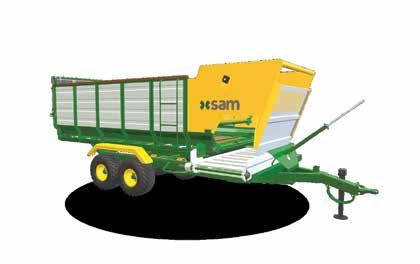


JOHN DEERE has unveiled its most powerful tractor ever, with the launch of the all new 9RX Series Tractor line-up –including three new highhorsepower four-track models.
John Deere Production systems manager Ben Kelly said the 9RX range marked a new era in highpowered performance, to meet the demands of
modern farming.
“With shifting weather patterns, labour shortages and growing input costs, the ability to prepare, plant and harvest rapidly and efficiently has never been more important to our customers,” Kelly explains.
The three new 9RX models will be powered by the JD18 engine from John Deere Power Systems. This is a Final Tier 4/Stage V-compliant 18-litre engine that meets
The
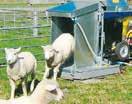
since 1989



emissions requirements using exhaust-gas recirculation technology without the need for Diesel Exhaust Fluid (DEF).
The 9RX Series is made up of the 9RX 710 (710hp rated/781hp max), the 9RX 913 max770 (770hp rated/847hp max) and the 9RX 830 (830hp rated/913 max) and maximum torque of 4234Nm. The engine is mated to a new e21 close spaced powershift transmission designed to take the increased horsepower. It offers 40km/h with 21F/11 R speeds, with features such as skip shifting to quickly get to operational
speeds in the paddock.
A new track system sees bigger drive wheels, more belt wrap and a new third idler wheel. These all combine to deliver a greater tractive footprint. However, despite the machine’s maximum operating weight of over 38 tonnes, it still only exerts a little over 0.6 kg per square cm.
In combination with the new engine, an optional new 635 L/min triple-pump hydraulic system gives farmers the confidence to pull wider and heavier airseeding trains over rolling ground, while still
maintaining tractor and fan speed. To help farmers prepare for autonomous operation, each of the new 9RX Series tractors will be equipped with autonomous-ready capabilities. This will allow them to make the switch quickly and easily to fully autonomous operation in the future. Key features of the package includes rear implement ethernet, new visibility features, a back-up alarm, a 330-amp alternator, a brake controller and valve – as well as all the necessary connectors, controllers and harnesses.
The new Command-
ViewTM 4 Plus cab offers a 15% increase in floor space alongside a 20% improvement in visibility from the right-hand side, increasing storage capacity and comfort. Meanwhile, a four- post suspension system offers three axis movement and an isolated subframe to protect operators from uneven terrain and noise.
Kelly says the additional floor space and enhanced visibility offered by the 9RX Series means a much more comfortable work environment.
“This includes extra food and drink storage and a clearer view.”
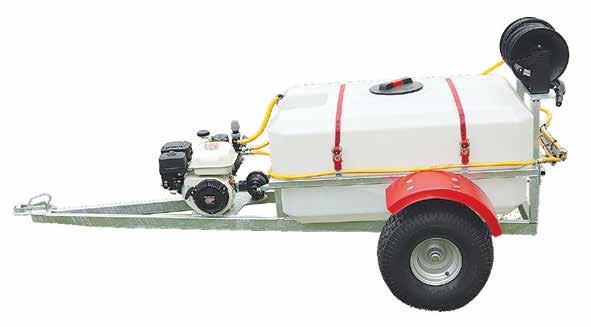

The new models include the G5Plus CommandCenter Display and integrated StarFireTM 7500 receiver. An optional G5 Advanced technology package with SF-RTK offers the ultimate in precision capabilities. This includes AutoTrac Turn Automation for automated headland turns, as well as tools for more precise implement guidance and the automated creation of guidance lines.
The new MY25 highhorsepower 9RX models will be available for order from mid-March for delivery in early 2025.
















